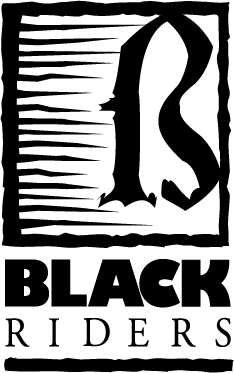Black Riders Origins, Part 1
Author’s Note: This post originally appeared in the 2011 iteration of this website. It was the first post in a reboot of this website as a blog. Rereading it in 2021, it seems quaintly out of context, but I keep it as a reminder of where I’ve been.
Cover for Black Riders: The Visible Language of Modernism.
To start my first post, please let me introduce myself: my name is Winston Pei and I’m the founder and principal designer of Black Riders Design. Sounds very grand, eh? Well, truth be told, I’m also our only employee. Black Riders Design is me and I am Black Riders Design, and in the world of virtual identities, “Black Riders” has become something of a pseudonym. This newest incarnation of this website rises in part out of that state of being.
In particular, the focus here is shifting away from the business side a bit, and instead I’m letting this space become something a little more personal. A lot of things have led me to this point, but it really gelled today when I had a chance to go visit my favourite spot at the University of Alberta, the Bruce Peel Special Collections Library. They happened to have some sweet specimens from the collection out on a table, and seeing them got me all fired up again about my passion for books and reading and all manner of related topics. That in turn sparked the idea of starting to share examples of these things, and my passion for them, with the interwebs.
Interior page from Black Riders: The Visible Language of Modernism showing artwork by William Morris.
I figured as a first item to share, what better than the book from whence came the name: Black Riders: The Visible Language of Modernism by Jerome McGann (Princeton UP, 1993). This volume in turn had drawn its title from Stephen Crane’s first published book, Black Riders and other lines, whose typographical innovation inspired poet Robert Carlton “Bob” Brown to say of his own optical poem Eyes on the Half-Shell, “I like to look at it, merely sit and look at it, take it all in without moving an eye. It gives me more than rhymed poetry. It rhymes in my eyes. Here are Black Riders for me at last galloping across a blank page.” In other words, it’s about making your mark, typographically speaking, which seemed fitting for a company with its roots in graphic design.
From there, the notion of black riders galloping about and making a mark in the world has grown to be something much larger for me. In all that I do, how can I leave my mark, my black riders, and how can I help you leave yours?
Well, I guess this is one way…


